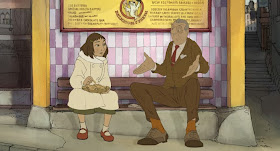Oscar prognostication, once no more than a living room activity, has become Big Business; every print or TV media personality remotely connected to cinema has jumped onto the bandwagon.
No surprise, really. The gig is tantalizing; the trick is to anticipate and navigate the complex weather patterns that might guide Academy voters each year. Will they honor individual achievement, or consider a nominee’s past work? (Hello, John Wayne.) Will a sweeps mentality prevail, motivated by an over-compensating desire to acknowledge a tremendous achievement? (Got my eye on you, Titanic
Will the voters in a particular category, stung by recent bad press, behave foolishly in an effort to be viewed as hip? (Nothing else can explain the Best Song wins by “Last Dance,” from 1978’s Thank God It’s Friday
At the end of the day, it’s impossible to catch all the prevailing winds; the Academy Awards always produce some surprises. Indeed, that’s part of the fun. And although we definitely suffer from “awards show glut” at this time of the year, I take heart in the fact that the Oscars remain The Big Show. After all, nobody bothers to predict the Golden Globes, or offer contests for same.
The Academy Awards show itself continues to be tweaked and fine-tuned to increasingly silly degrees. We once again have 10 choices for Best Picture, apparently to bribe viewers who wouldn’t tune in unless they could see scenes from 127 Hours
And I’m equally dismayed by the dweebs who make similarly ludicrous rules in the Best Animated Feature category, which once again fields only three entries. C’mon, folks; be logical: If you expanded the Best Picture category for the sake of acknowledging box-office popularity, wouldn’t it make sense to do the same with animated features?
But enough with the eye-rolling; let’s get to the meat of the matter. It’s a potentially exciting year for Oscar, and a tough year for predictions. So let’s see how many right answers I can talk myself out of this time...
Visual effects
A busy category this year, with five nominees (usually no more than three). The marvels of Harry Potter and the Deathly Hallows 1 and Iron Man 2
Makeup
Nobody saw The Way Back, and Adrien Morot’s aging make-up in Barney’s Version, while excellent, also wound up in a little-seen film. Name-brand recognition is tough to beat in this category, and the name belongs to Rick Baker. So even though his film was perceived as a horror dud, I expect him to win, for The Wolfman.
Sound mixing
Bear in mind that this category represents the totality of the sound-mixing process – the music, the dialogue, the background noises and everything else – whereas the next category focuses more specifically on fabricated sound. Think sound effects, like visual effects.
The Motion Picture Sound Editors’ annual Golden Reel Awards aren’t much help here, since they divide the spoils within even more sub-categories. Their 58th annual ceremony, which took place Sunday, gave two awards to Inception, for music editing and sound effects/foley editing. The Social Network took the Golden Reel for “dialogue and ADR,” which would correspond most closely to this Oscar category.
My personal choice would be the folks who really made me feel like a part of the action, in True Grit, but that ain’t gonna happen. Both sound categories, as with visual effects, will be knee-jerk bones thrown to Inception, in this case acknowledging Lora Hirschberg, Gary Rizzo and Ed Novick.













